It’s been said time and time again, but there’s no denying the massive effect that Scream (1996) had on the horror genre when it first appeared on our cinema screens in 1996. While horror fans will argue that horror has always been alive and kicking and that the early ‘90s gave us some amazing entries into the genre such as Frankenhooker (1990), The People Under the Stairs (1991), and Castle Freak (1995), the wider cinema-going audience perhaps had less affinity to these cult classics. The truth is that after the rush of stand-out movies in the ‘70s and ‘80s such as Halloween (1978), A Nightmare on Elm Street (1984), Friday the 13th (1980), and The Texas Chain Saw Massacre (1974), the ‘90s seemed pretty lacking in comparison.
And then Scream came along and reminded the world that the horror genre wasn’t dead! Scream was here to show us that horror could shock us, excite us, and offer us something different. With the interest in horror growing again, film studios and horror film creators were keen to ride this wave of popularity, whether through a love of the genre or just through the cash potential a successful horror movie could bring.
This means that as the ‘90s finished and we welcomed in the millennium, we were treated to a number of self-aware slashers trying to capture the magic that Scream had brought to the cinema screen. Some were more successful than others, but for better or for worse we were introduced to movies such as Valentine (2001), I Know What You Did Last Summer (1997), Urban Legend (1998), and Cherry Falls (2000).
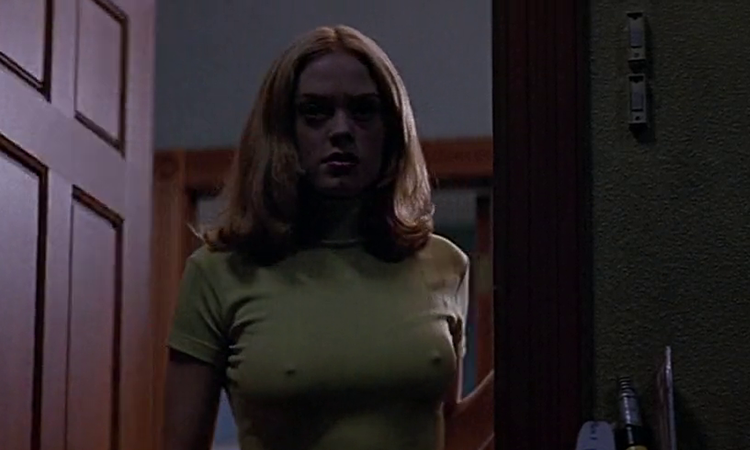
Well, it turns out there are only so many meta-slashers you can make before the ideas become a little too similar and the genre starts to feel slightly stale again. So, as we welcomed in the 2000s, the genre decided to take a different direction and instead embraced horror remakes to keep the cinema listings packed with genre movies. The horror genre is no stranger to remakes and has already shown us that remakes can easily be better than the source material with movies such as The Fly (1986), The Blob (1988), and The Thing (1982). However, the sheer amount of remakes we got between the years 2000 and 2009 shows us how heavily filmmakers leaned into this story creation method in a bid to keep horror on the same levels of post-Scream popularity.
Some will turn their nose up at horror remakes, claiming that they are lazy and only used as a means to make money, and while that is perhaps the case sometimes, it doesn’t seem true to the majority of horror remakes we got in those 10 years. In fact, these movies had a lot of things in common, but being lazy and boring was not one of them! Let’s take a look at what made this period of cinema so amazing, and why dismissing movies purely for being remakes means you’re missing out on some brilliant films!
Remaking the Forgotten Stories
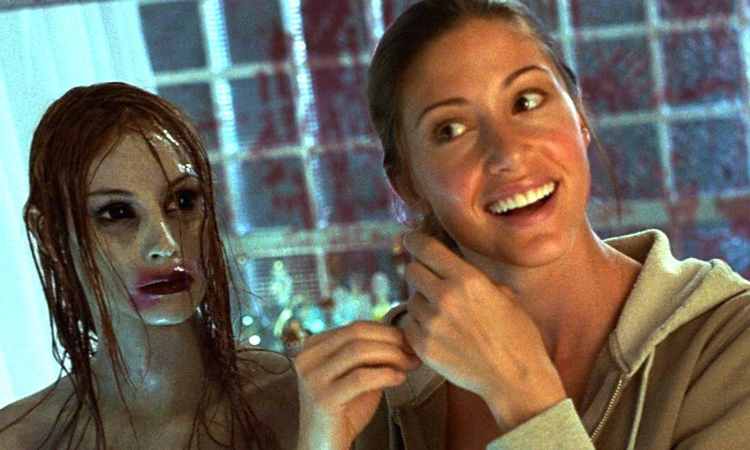
While it’s true that some classic horror movies did go through the remake treatment in the early 2000s, such as The Texas Chainsaw Massacre (2003), Carrie (2002), and The Dawn of the Dead (2004), the ‘00s did a spectacular job of picking those lesser-known movies and bringing them into the public eye. Again, while many die-hard horror fans were probably familiar with the originals, a lot of these horror gems may have escaped most people. Remaking these types of movies not only means that fans of these less popular gems were treated to a resurgence, but it also introduced a whole bunch of classic horror movies to a new generation of horror movie fans as they flocked to the cinema to see the remakes.
For example, I remember going to see the Black Christmas (2006) remake without being aware it was a remake, but being excited to seek out the original once I realised there was also a 1974 version. In some ways, it’s like getting introduced to two new movies for the price of one, and definitely encouraged me and probably many others to seek out the original movies and see how the remakes stacked up.
The remake resurgence went right back to older horror movies that had amazing concepts and scary ideas and brought them into the modern-day limelight to get the love and attention they deserved. First up, was Thirteen Ghosts (2001), a remake of the William Castle movie from 1960, which retained the family drama heart of the original movie, but amped up the focus on the ghosts. This time we were treated to a Black Zodiac of (mostly) killer ghosts, and a house that was as likely to kill someone as the ghosts were. Much like the original movie, it made sure to drive home that humans are the real villains, and ghosts don’t really get to decide what happens to them in the afterlife.
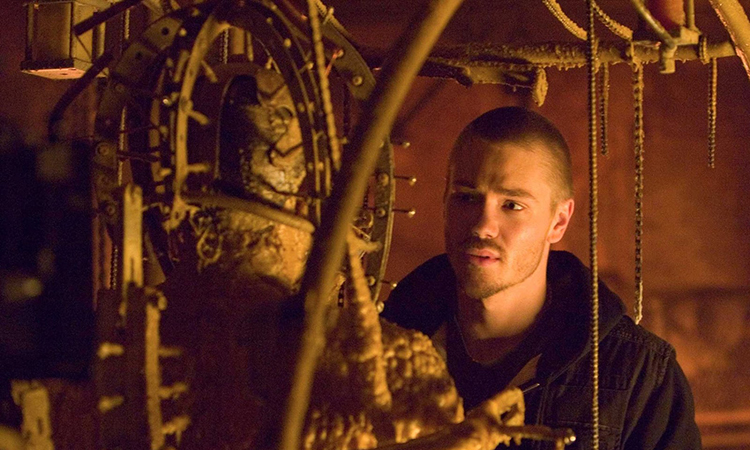
Another excellent remake of not one but two overlooked films was House of Wax (2005), a remake of House of Wax (1953), which itself was a remake of Mystery of the Wax Museum (1933). Both movies had the interesting premise of a wax artist driven mad who uses his talent and need for revenge to create wax models from the people he murders. The 2005 version took this central premise and updated it into the slasher format we’re more familiar with in modern-day horrors. Instead of a grand, gothic wax museum in the middle of a bustling city, House of Wax follows a group of teens getting lost on a road trip and ending up at the mercy of a set of twin serial killers with a passion for wax and an obsession with their dead mother. The makers of House of Wax took this classic story and slotted it perfectly into the post-Scream world.
Picking these lesser-known movies instead of simply rehashing the incredibly well-known stories meant that even though these movies were remakes, the ideas, the stories, and the villains all felt fresh. As well as adding to the future of horror movies, they reopened the gate to these older horror movies as well, showing there’s always room for everyone in the horror genre.
Let’s Make it Modern
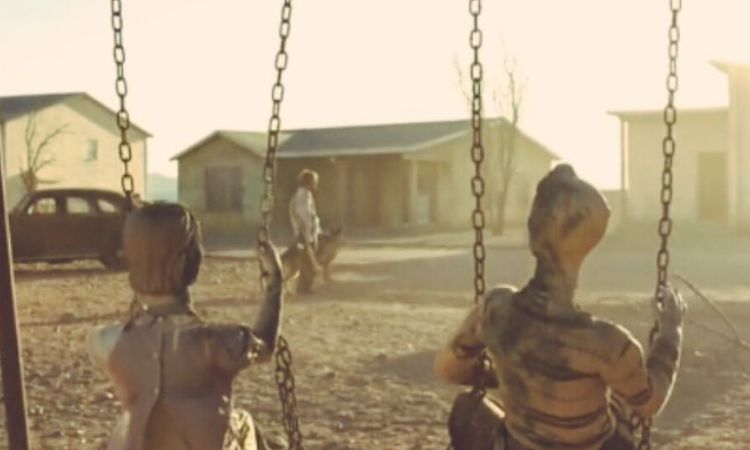
Another reason why remaking horror movies is a good idea, and why a lot of the ‘00s horror movies succeed in their job, was because retelling the same story years later allows you to retell it from a modern perspective. Horror movies are well known for tackling particular social issues depending on when they came out, and remakes give filmmakers the chance to use the same central story to convey a different message to the audience.
Take The Hills Have Eyes (1977), for example. The original movie is about a family of cannibals who live in the desert after their leader was abandoned by his father due to his violent nature. The themes in The Hills Have Eyes have been said to represent everything from the Vietnam War, morality issues, and the American class divide. However, The Hills Have Eyes (2006) is more direct with its themes and brings them right up to date for a modern-day audience. This time around, the cannibal family in the desert has been created as a result of nuclear testing by the US government, which was seemingly carried out with little regard for those working in the neighbouring mines. There’s no denying that the film is a swipe at the US government and nuclear weapons, with the US army also getting dragged into the equation in the sequel, The Hills Have Eyes 2 (2007). Big Brain’s anti-government speech and sarcastic singing of the National Anthem show just what he thinks of the US government, and considering the strong war opposition at the time, it’s no surprise the updated version of the story took this timely focus.
Sometimes making a remake modern is about doing something as simple as making modern-day technology a major plot point in the movie, just as Sorority Row (2009) did. While the story is still about a group of sorority sisters covering up an accidental murder they were a part of, the 2009 remake takes a more I Know What You Did Last Summer approach, with an unknown killer stalking the women a year later, hoping for revenge. The killer makes use of their mobile phone, using text messages and picture messages to harass the young women, as well as the threat of a video of the murder to ensure the sorority sisters don’t run to the police. Using mobile phones as a harassment technique means that the killer is able to not only harass the women from afar, and therefore escape detection for much longer, but they were also able to attack all the women at once, ensuring they were scared and cut off from any form of help with minimal effort on the killer’s part.
Genre Love Letters
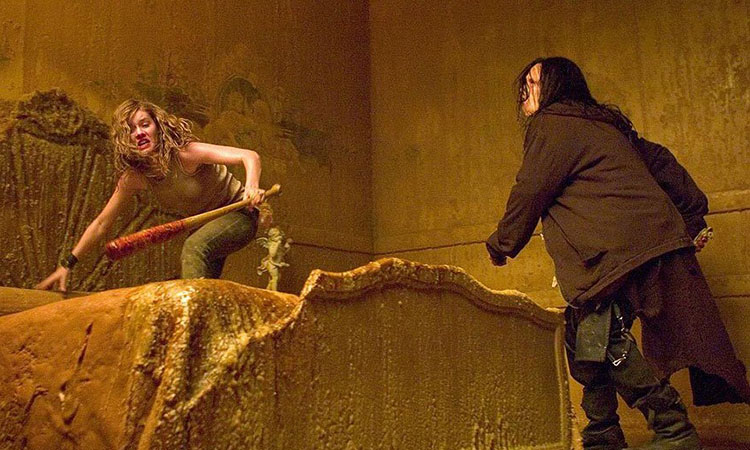
Remakes are often cited as a sign that filmmakers have run out of ideas and simply want to reuse old ideas as an easy way to make money, but it’s clear that many of the remakes made in the ‘00s were made with care and attention, and were real love letters to the original movies which inspired them. The chance to not only make a horror movie but to remake a classic horror movie and put your own spin on it is an amazing opportunity, and so it only makes sense to show respect and love for what came before, even if the remake ends up totally different.
William Castle was well-known for all his movies featuring some sort of gimmick to draw in audiences, and the original 13 Ghosts (1960) was no different, with audiences being given the option of wearing 3D-style glasses so they could view the ghosts in the movie, much like the special ghost-viewing goggles the characters wear in the movie. These special glasses were carried forward into the remake, playing an even more central role this time around as the ghosts were a lot more murderous than they were in the original movie, making it even more important that the characters could see them.
Sometimes the loving nod to the original movie is even more subtle, as is the case in House of Wax. While the killer twins bear little resemblance to the killers from the original movies, the talented wax artist of the pair is named Vincent, a clear nod to Vincent Price’s role in the 1953 version of House of Wax.
A New Angle
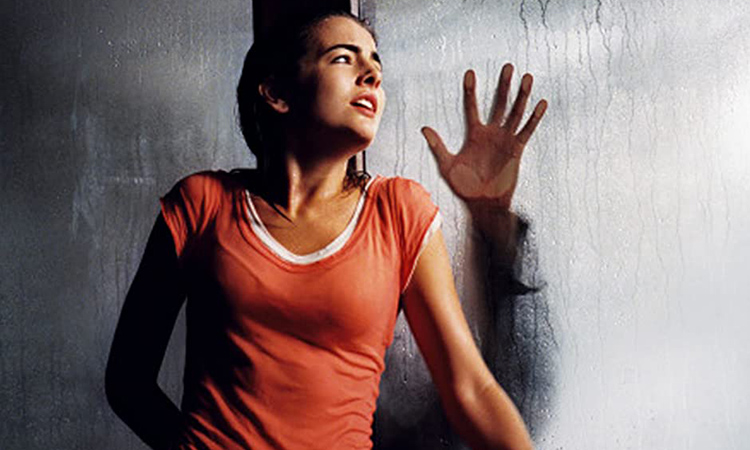
The final way that the large collection of remakes from the ‘00s brought something new to the table and enhanced the horror genre remarkably was because a lot of them tried something different and opted for a new approach rather than a shot-for-shot remake, though there were a few of those in the ‘00s as well.
Perhaps the most striking is the 2006 remake of Black Christmas. While it focuses on the same story in relation to the sorority sisters getting stalked and murdered just before they leave for Christmas break, the remake decided to give us more of a backstory on the killer, Billy, and what drove him to murder and a dislike of Christmas. While the original movie is a much darker and chilling story, the 2006 version went for an over-to-top slasher story, which features more dislodged eyeballs than you can shake a stick at. In this version of the story, it makes sense to have a zany backstory that involves a rejected, jaundiced killer, skin Christmas cookies, and a high level of incest, because it fits in with the ridiculous kill scenes, and makes up for the fact that most of the sorority sisters are far more unlikable than their 1974 counterparts.
The When a Stranger Calls (2006) remake took the best part of the original When a Stranger Calls (1979), which is the opening 15 minutes or so when Jill is stalked by a killer while she babysits some children, and extended the plot to last the entire runtime of the movie. People were familiar with the whole ‘the call is coming from inside the house’ element of the original movie whether they had seen it or not, but the rest of the original movie is more of a police procedural than a slasher movie. The remake took the scariest bit of the 1979 movie, and focussed on that, knowing it would fit well in the slew of recent successful slashers.
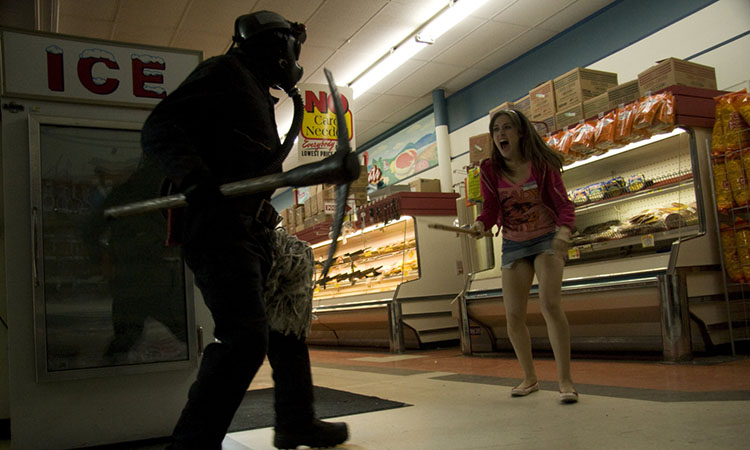
Finally, in My Bloody Valentine 3D (2009), the remake decides to mostly follow the same story but throws in a twist at the end when the killer’s identity is revealed, opting for the other main suspect in the original My Bloody Valentine (1981) to be unmasked as the killer. This means that even die-hard fans of the original will be surprised when the killer is actually revealed, and the remake doesn’t simply rehash the original story. Instead, My Bloody Valentine 3D looks to create a new experience and provide viewers with a new mystery to solve. Instead of simply treading old ground, the film aims to ensure the audience is entertained and that fans of the original will appreciate the bait-and-switch aspect even though the suspects are the same as the original movie.
Choosing to remake the movies in this way, instead of staying completely faithful to the original movies means that even if you’ve seen the original, the remake will seem like a completely new movie! It also means that viewing the remake first, as I did with a lot of these ‘00s remakes, won’t spoil the plot of the original.
So, if remakes have never really been your thing, or you’ve missed out on a few of those ‘00s remakes from your horror viewing list, now is definitely the time to catch up! Not only will you get to experience some of the finest horror remakes we’ve had in recent years, but if you’re anything like me, it may just help you discover some horror classics that have flown under your movie radar!

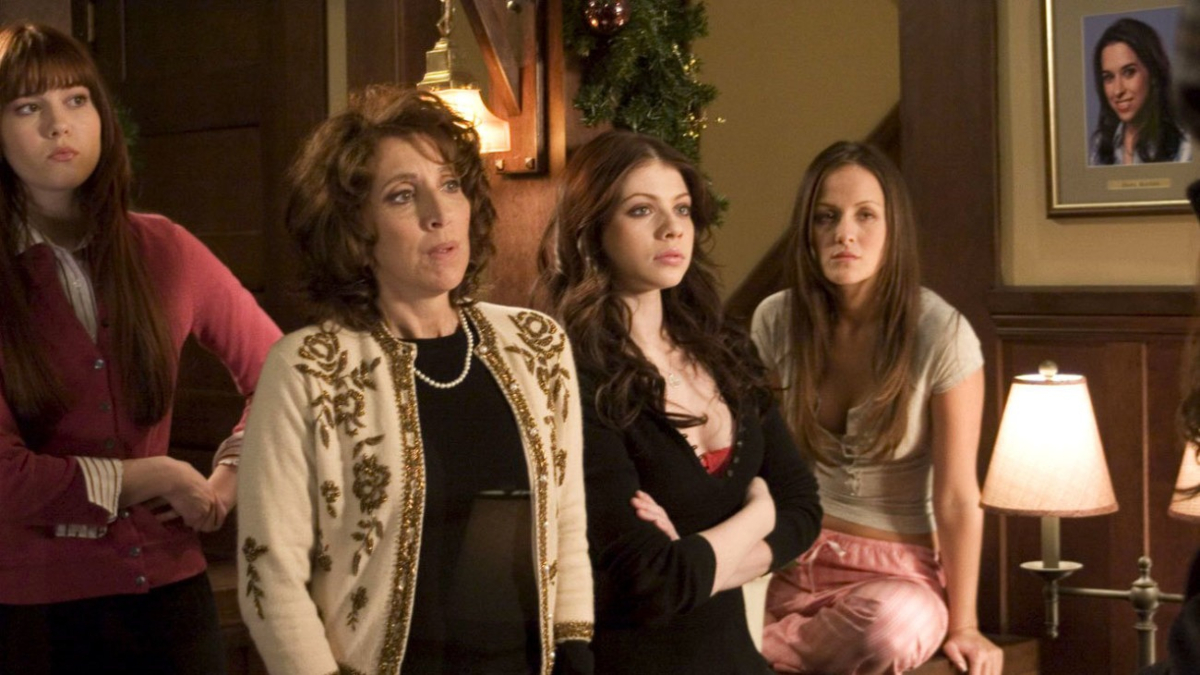
Hey!! Awesome Ms.Kim 👍 …and yes..of course, remakes have these double purpose, when you discover the original movie thanks to watch a remake and your curiosity looks for more or the opposite way, when you find a remake so you knew the original movie and you want to consider other point of view, for better or worse sometimes. Juan
LikeLiked by 1 person